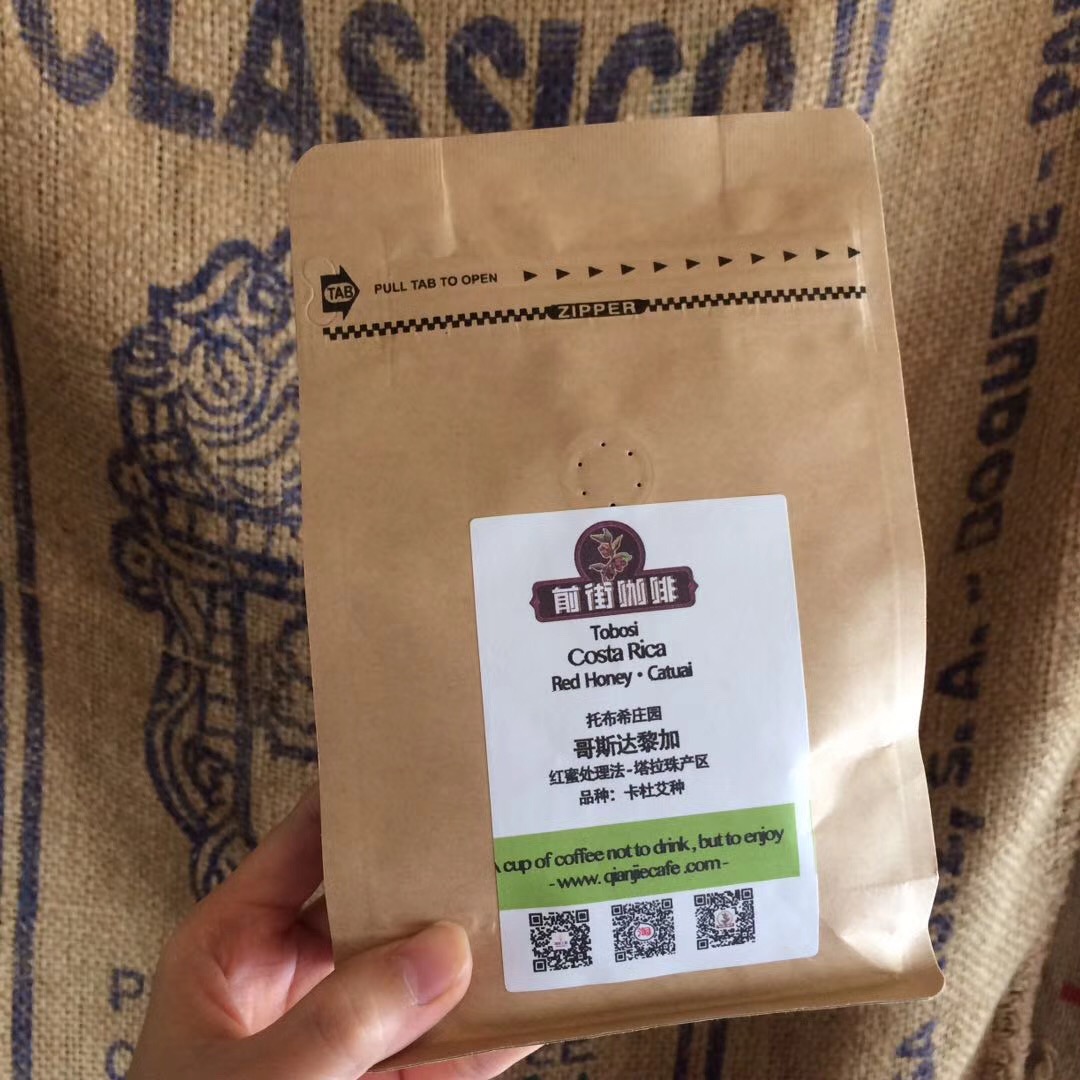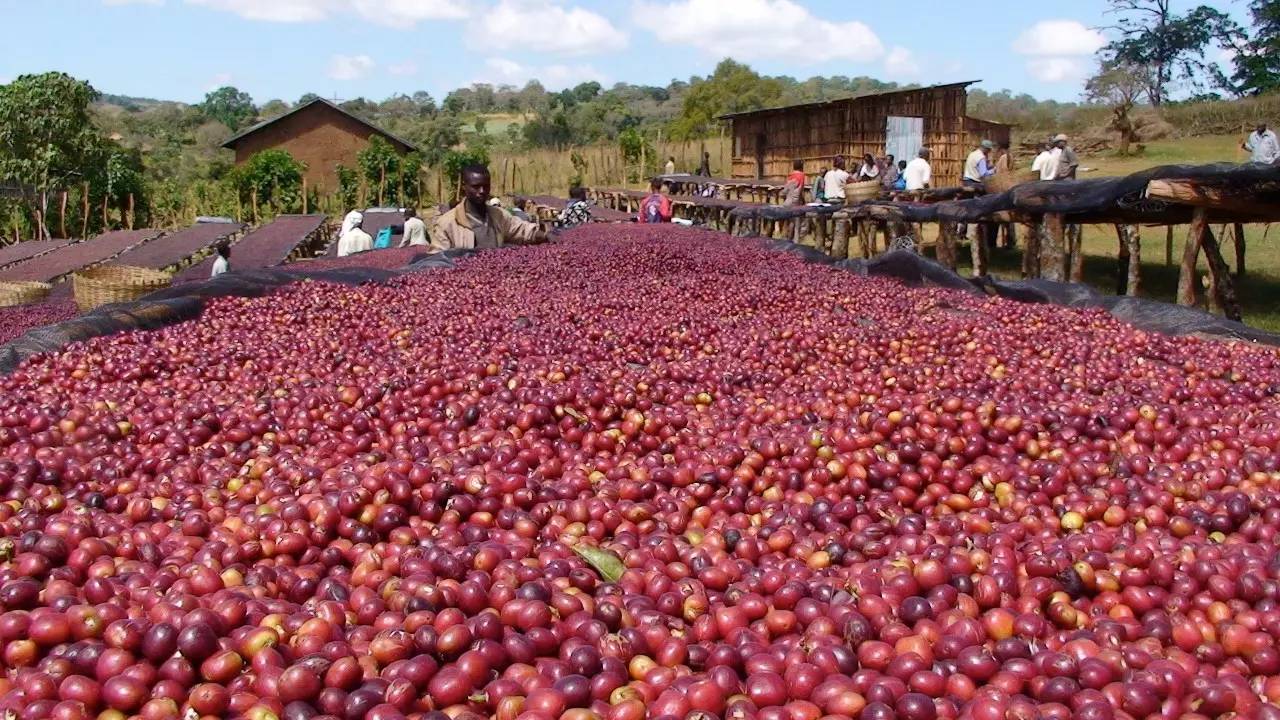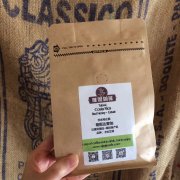Italian coffee and Viennese coffee are synonymous with the degree of roasting.
For professional baristas, please follow the coffee workshop (Wechat official account cafe_style)
What is the amount of information contained in the name of coffee?
Take chestnut, coffee name: Costa Rica Tarrazu SHB EP Red Honey, [country + producing area + graded name + handling method]
European ep standard red honey treatment of extremely hard beans in Tarazhu, Costa Rica

Country of origin of raw beans:
Such as Ethiopia Ethiopia, Sumatra Sumatra, Guatemala Guatemala
But if a bag of coffee is marked with the name of a city in an European country, such as Italy, Vienna, etc., it is not individual coffee. Because coffee beans are not produced in continental Europe!
Generally speaking, "Italy" and "Vienna" are synonymous with the degree of baking (or blending), but it does not mean that this is coffee made in Italy or Vienna!
Producing areas:
Countries are also divided into many coffee-producing areas. Take Ethiopia-Ethiopia Yirgacheffe, for example, Yirgacheffe is a high-altitude, narrow, small producing area in Ethiopia's Sidamo district.
Different small producing areas mean different flavor characteristics. So this beautiful name is a producing area name, not a variety! Some coffee beans will be added with the name of the processing plant or manor.
For example, Aricha (Ethiopia-Yirgacheffe- Aricha Kebele), which is full of Sydney and wine flavor, is the name of the coffee bean processing plant.
Handling method:
It refers to the artificial treatment from coffee fruit to raw beans, that is, to remove the pulp and peel and get the seeds inside. This process is usually divided into two types: washing and tanning.
Generally speaking, most high-quality coffee beans come from washing, and the coffee beans treated in this way are uniform in color, clean and odorless. Of course, various countries will deal with coffee beans according to their local natural resources. for example, countries that are short of water will naturally rely more on the sun.
Judging whether it tastes good or not also varies from person to person. Some people like the purity after washing, while others love the unrestrained taste spectrum after the sun.
Level:
Since coffee is a kind of crop, it needs to be graded after it is processed into raw coffee beans in order to meet the multi-level market demand.
Generally speaking, the same kind of coffee beans, the larger the particles, the higher the grade, and the grading varies from country to country. For example, Ethiopia will use G1/G2/G3 to express the grade, while Kenya will use AA / AB/AP to express it, and some will use hardness (that is, density) grading, the higher the hardness, the higher the grade.
In general, the grade of coffee beans will be added to the end of the trade name.

Coffee bean varieties:
Ancient native species: Typica (Bourbon)
Pointed Bourbon (BourbonPointu): found in Bourbon Island in 1810, beans changed from round to pointed, with only half the caffeine content, but in small amounts, weak and extremely precious (mostly cultivated in the laboratory).
Elephant beans (Maragogype or Elephant Bean): Tibica's best-known variety of beans, first discovered in 1870 in the Maragogype bean-producing area of the state of Bahia in northeastern Brazil, is at least three times larger than the average Arabica, hence the name. The taste of elephant bean is poor in low altitude area, but it has better flavor at high altitude, mild sour taste and sweet fragrance.
Geisha (Geisha): a derivative of the Tibika family, it was exported from the Geisha Mountains of southern Ethiopia in 1931 (Geisha is synonymous with Japanese geisha). After being unknown in many countries, it was transplanted to Panama in the 1960s and did not begin to win cup tests until 2005.
Kenyan "SL28" and "SL34": the bourbon line, screened and cultivated by French and British missionaries and researchers in Kenya in the early 20th century, has adapted to Kenya's high-concentration phosphate soil for a century, giving birth to Kenyan characteristics of sour elves; top Kenyan coffee comes from these two varieties, but it loses its flavor when transplanted elsewhere.
Yellow bourbon (Bourbon Amarello, or Yellow Bourbon): a bourbon variety endemic to the Brazilian state of Sao Paulo, where the coffee fruit does not turn red and is orange when ripe. It was later found that the pericarp of other local bourbon-derived varieties also turned yellow.
Kaddura (Caturra): a single genetic variant of bourbon, discovered in Brazil in the 1950s. The long-term ability and disease resistance are better than bourbon, and no shade tree is needed; the flavor is equal to or slightly worse than bourbon.
Pacas (Pacas): the bourbon variety found in El Salvador, which was transplanted into El Salvador coffee farmer Pacas in 1935, yielded more results than other coffee trees of the same species in 1956. Experts were asked to identify and confirm that there was a genetic mutation.
The bourbon variety, which was first discovered in Costa Rica in the Villa Sarchi:1960 era, has often appeared on the cup test list of excellence in recent years.

Baking date:
The date marked on the label is the baking date.
Are the freshly baked coffee beans the best?
In fact, the best taste can not be shown from the moment it is baked. Generally, baked beans will not show all kinds of flavor until a week after baking. Of course, then the aroma of the coffee will start to evaporate, so the best taste period is within three months.
Check valve:
It's almost a common practice for everyone to squeeze the smell out of the one-way valve, and when you stimulate dopamine, I want to tell you that the one-way valve is smart enough to block the contact between the outside air and the beans. At the same time, it can also let the beans breathe out.
Flavor description:
For most people, this is a brain-opening guide. In other words, half depends on the tongue and half depends on the imagination. For example, if there is caramel in the description, it does not mean that it has that sweet and greasy taste. The peach flavor in the description is not as bright as peach.
Important Notice :
前街咖啡 FrontStreet Coffee has moved to new addredd:
FrontStreet Coffee Address: 315,Donghua East Road,GuangZhou
Tel:020 38364473
- Prev

Popular science | how to interpret the label of coffee beans and the label of raw beans and cooked beans
Professional barista communication Please pay attention to the coffee workshop (Wechat official account cafe_style) what information is contained in the name of coffee? Take chestnut, coffee name: Costa Rica Tarrazu SHB EP Red Honey, [country + producing area + graded name + treatment method] translated: extremely hard beans from Tarazhu, Costa Rica, European ep standard red honey treatment of raw beans.
- Next

Costa Rica Tara Zhu production area extremely hard beans European ep standard red honey treatment what does it mean?
Professional barista communication Please pay attention to the coffee workshop (Wechat official account cafe_style) what information is contained in the name of coffee? Take chestnut, coffee name: Costa Rica Tarrazu SHB EP Red Honey, [country + producing area + graded name + treatment method] translated: extremely hard beans from Tarazhu, Costa Rica, European ep standard red honey treatment of raw beans.
Related
- Detailed explanation of Jadeite planting Land in Panamanian Jadeite Manor introduction to the grading system of Jadeite competitive bidding, Red bid, Green bid and Rose Summer
- Story of Coffee planting in Brenka region of Costa Rica Stonehenge Manor anaerobic heavy honey treatment of flavor mouth
- What's on the barrel of Blue Mountain Coffee beans?
- Can American coffee also pull flowers? How to use hot American style to pull out a good-looking pattern?
- Can you make a cold extract with coffee beans? What is the right proportion for cold-extracted coffee formula?
- Indonesian PWN Gold Mandrine Coffee Origin Features Flavor How to Chong? Mandolin coffee is American.
- A brief introduction to the flavor characteristics of Brazilian yellow bourbon coffee beans
- What is the effect of different water quality on the flavor of cold-extracted coffee? What kind of water is best for brewing coffee?
- Why do you think of Rose Summer whenever you mention Panamanian coffee?
- Introduction to the characteristics of authentic blue mountain coffee bean producing areas? What is the CIB Coffee Authority in Jamaica?

